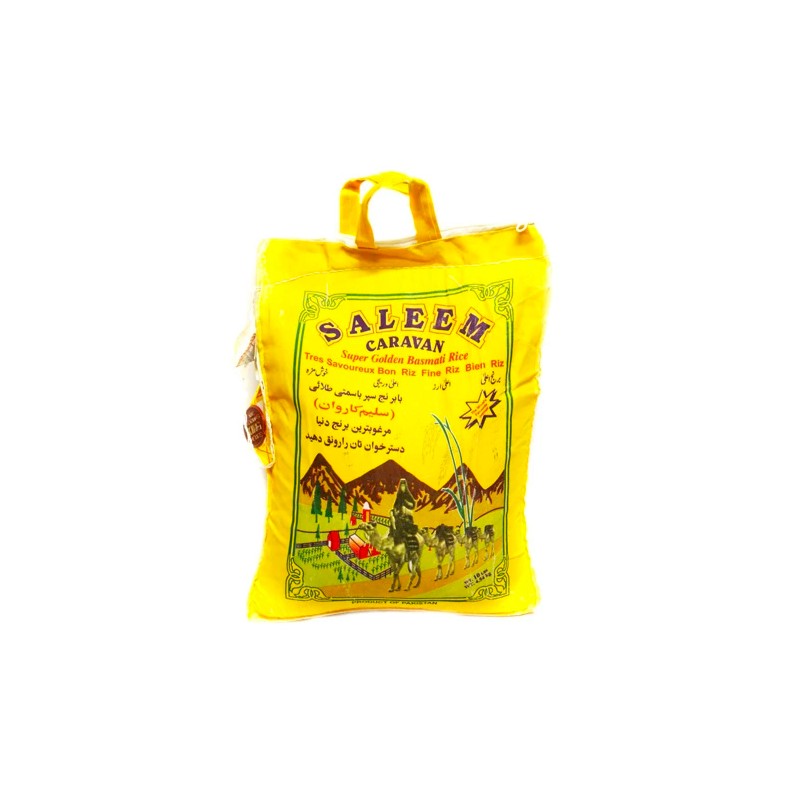- New
Ozsari Bulgur #1 Yellow 1 Kg Bag
Call us:
+16137261792Reference:
Salem Caravan Pakistani Rice 10 lb Bag

Security policy

Delivery policy

Return policy

Salem Caravan Pakistani Rice 10 lb Bag
Ozsari Bulgur #1 Yellow 1 Kg Bag
Cedar Patna Rice 907g
| This mildly flavored rice comes from the Bihar region of the Ganges plains. It has a robust, long and narrow, opaque grain that keeps its shape well for curries. Basmati rice is closely related to the Patna rice but has a stronger aroma. Patna rice is the most esteemed in UK and USA and is the highest priced rice in the grocery stores. |
India Salaam Golden Basmati Rice 10LB
Cedar Brown Basmati Natural Rice 907g
| Literally translated as "queen of fragrance," basmati has been grown in the Himalayan Foothills of India and Pakistan for thousands of years. Brown Basmati Rice is a thin, long grain that is light beige in color. Brown Basmati retains the outside Bran layer that gives it a higher fiber content and more predominant aroma than White Basmati. Brown Basmati has a rich, nutty flavor and cooks up easily into separate, fluffy grains that have a firm texture. You can substitute Brown Basmati wherever a recipe calls for Brown Rice. Brown Basmati is an excellent choice when a fluffier, drier texture is desired and provides protein and carbohydrates as well as Vitamin B, which aids in digestion. |
India Salaam Creamy Basmati Rice 10LB
Cedar Basmati Rice 907g
This Basmati rice originates from India's Basmati seeds. Prized for its aromatic qualities, this unique rice fills your home with the fragrance of popping corn while it cooks. The delightful popcorn fragrance and flavor is natural to this aromatic rice. Nothing was added to this rice and no special steps are needed to achieve this special aroma and flavor. It looks and cooks just like other long grain rice's. This is one of the most flavorful rice's you'll ever taste.
Cedar Brown Natural Rice 907g
Natural Brown Rice has a wonderfully nutty flavor and firm texture. That's because the rice germ and bran layers are left on the rice. So it is higher in fiber and protein than regular milled rice. Natural Brown Rice offers great versatility and more variety to many everyday meals
Durra Egyptian Rice 900g Bag
Salem Coarse Semolina 2 lb Bag
Ozsari Bulgur #2 Yellow 1 Kg Bag
Durra Egyptian Rice 4.5kg Bag
Sunwhite Australian (Egyptian Rice) 10 lb Bag
Cedar Parboiled Rice 907g
| Parboiled rice is rice that has been boiled in the husk. Parboiling makes rice easier to process by hand, improves its nutritional profile, and changes its texture. The practice of parboiling rice is more than two thousand years old, and may have started in the Persian Gulf. Today, it is the preferred rice of many in the southern parts of the Indian Subcontinent. |
Ozsari Red whole Turkish Lentil (Football) 1 KG Bag
California Garden Fava Beans Regular 454 g
Cedar Perfumed Rice 907g
| White Jasmine Rice is an aromatic long grain rice originally grown in Thailand, and similar to Basmati rice. With an aroma of popcorn and nutlike flavor this rice is an excellent choice for stir-fry, salads, stuffing, pilaf, and desserts. |
